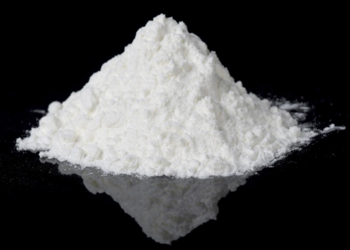Description
Understanding Ketamine HCl Injectable 500mg/mL: Uses, Benefits, and Considerations
Introduction
Order Ketamine HCl Injectable 500mg/mL 10mL, a well-known anesthetic agent, has gained attention in recent years for its therapeutic potential beyond the operating room. Specifically, Ketamine HCl Injectable at a concentration of 500mg/mL has emerged as a versatile option in various medical settings, particularly in pain management and mental health treatment. This article explores the applications, benefits, and considerations surrounding the use of Ketamine HCl Injectable.Adipex weight loss
What is Ketamine HCl?
Ketamine is a dissociative anesthetic that was originally developed in the 1960s for use in surgical procedures. It works primarily by blocking NMDA receptors in the brain, which modulates pain perception and alters consciousness. The injectable form, specifically at 500mg/mL, is a high-concentration solution used in both acute and chronic settings.
Uses of Ketamine HCl Injectable
- Anesthesia: Ketamine is frequently used in various surgical and procedural settings due to its rapid onset and dissociative properties. It is effective for both induction and maintenance of anesthesia.
- Pain Management: Ketamine has analgesic properties that make it useful for treating acute and chronic pain conditions. It is often used in patients who have not responded well to traditional pain medications.
- Mental Health Treatment: Recently, ketamine has gained prominence for its rapid-acting antidepressant effects, especially in cases of treatment-resistant depression. Clinics offer ketamine infusions as a part of an integrative approach to mental health.
- Emergency Medicine: In emergency situations, ketamine is utilized for analgesia, sedation, and as a rapid-acting anesthetic for certain procedures, especially in trauma cases.
Benefits of Ketamine HCl Injectable
- Rapid Onset of Action: Ketamine’s effects can be felt within minutes, making it particularly useful in urgent medical situations.
- Versatility: Its use across various fields—ranging from anesthesiology to psychiatry—demonstrates its multifaceted nature.
- Minimal Respiratory Depression: Unlike many traditional anesthetics, ketamine does not significantly depress respiration, allowing for safer administration in certain contexts.
- Potential for Neuroprotective Effects: Emerging research suggests that ketamine may have neuroprotective properties, which could be beneficial in managing conditions like traumatic brain injury and stroke.
Considerations and Risks
While ketamine is a valuable tool in medicine, certain considerations and risks must be acknowledged:
- Side Effects: Common side effects include hallucinations, dissociation, elevated blood pressure, and nausea. Patients must be monitored for these effects during and after administration.
- Psychological Effects: Given its psychoactive properties, the use of ketamine for mental health treatment should be carefully supervised by trained professionals.
- Dependency and Misuse Potential: Ketamine has a potential for abuse and dependence. Therefore, its administration should be restricted to controlled medical environments.
- Contraindications: Certain medical conditions, such as untreated hypertension, cardiovascular abnormalities, or a history of substance abuse, may contraindicate the use of ketamine.
Conclusion
This is a powerful and versatile treatment option with applications in anesthesia, pain management, and mental health. However, like any medication, it requires careful consideration of its benefits, risks, and appropriate contexts for use. If you are considering ketamine treatment for anesthesia, pain relief, or mental health conditions, it is essential to consult with a qualified healthcare professional to determine the best course of action tailored to your unique medical needs.
Final Thoughts
As research into the therapeutic uses of ketamine continues to grow, it holds promise as a groundbreaking treatment for various challenging medical conditions. Its potential to bring relief in acute situations and contribute to mental health strategies marks it as a noteworthy advancement in contemporary medicine.








